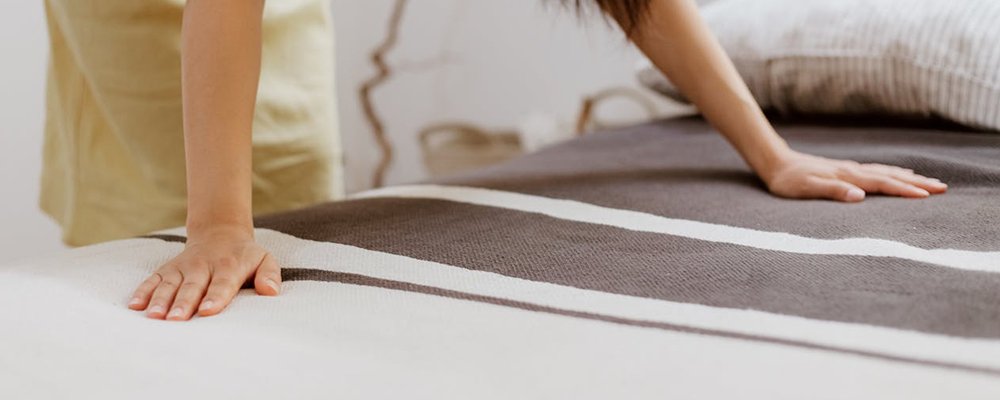We all know the fairytale of the Princess and the Pea, who slept badly because the queen had placed a pea under her 20 mattresses and 20 blankets—bed bugs are the marauding insect version of the pea that won't crown you a princess.
Super itchy and swollen bite marks result from sleeping with these snacking parasites. The night is feasting time when they leave their hiding places (seams of mattresses, bed frames, floorboards, wall cracks). But if they are starving for some human blood, which is their diet, an afternoon nap can become high-tea for the opportunistic crawlies. You won't feel their bite as a bed bug's saliva contains anesthetic—it's after the event, for the bumps to appear. Psychological torture ensues—the thought of these little critters with their six legs and two small antennae creeping and crawling over your body—eek!
Debunking the Bed Bug Myths
- Believing that bed bugs only inhabit unclean and dirty accommodations—they can be found in cheap hostels to luxury hotels and resorts—bed bugs are not picky about where they conduct their vampirish behavior.
- Bed bugs travel on our bodies—they don’t like our natural body heat and will not cling to our skin or hair.
- Bed bugs are disease-ridden—no, they don't actually transmit diseases to humans.
- Bed bugs can fly—they don't have wings and crawl.
- Bed bugs reproduce quickly—actually, they are slow to make babies compared to other insects. An adult female will only produce about one egg daily (houseflies produce around 500 eggs each four/five days). The egg will take 10 days to hatch and five to six weeks to become a bloodthirsty adult.
- Bed bugs can live up to a year without a feed—a tricky one, as it's believed that they can only live between two to three months without sucking blood. Still, if in a cold climate, they may last up to a year due to their metabolism slowing down.
- You will only find bed bugs in your mattress—wrong. They can be anywhere, from your suitcase to a train seat, ceilings to railings.
- Bed bugs bite only at night—although they are usually nocturnal, if they want a snack, they will come out at any time of the day to look for a source of blood.
Bed Bugs are Global Travelers
As nomadic as you are, so are bed bugs. During the non-travel period of the pandemic, the incidence and spread of bed bugs slowed. But, now that we are all footloose and fancy-free, bed bugs are jumping into suitcases or snuggling into your clothes at an alarming rate—wherever you go after being in an infected space, so will the bloodsucking hitchhikers. Paris has become the bug-hub of late, and India has been renowned for having bed bug infestations. Still, the problem is worldwide as people travel more and internationally.
While travelers bear the physical painful brunt, it's the hoteliers that are also losing sleep over the bed bug drama, with an estimated eight out of ten hotels experiencing a bed bug infestation at some point costing the industry big dollars; litigation from bitten guests, damaged reputations both online and by word of mouth, and lost revenue. Vast amounts of money are being spent to remedy the situation of infestations.

What to look for:
Before you curl up on that divine-looking bed in your hotel room, take the time to do a quick check for any freeloaders you have no desire to sleep with. They like to hide in tiny dark spaces.
Tips that unwanted guests have taken up residence:
- A musty, sweet odor
- Spotty stains on the sheets or mattress, blood smears
- Skeletons from bugs molting
Look around carefully—bug-hiding spots include any crevices, baseboards, and behind-hanging pictures. Don't leave your luggage on the floor and before unpacking pull the luggage rack away from the wall before placing your bag on it.
If by some chance you find an infestation in your room, alert hotel management immediately. Don't accept a different room until it has been thoroughly checked, especially not a room adjacent or directly above or below the bug room, as they easily move around on luggage and housekeeping carts, even through light sockets.
When you get home:
If you are paranoid or suspect that nasty wandering parasites may be lurking in your luggage, don't take it into your home; unpack it in a garage. Immediately wash all your clothes or put them in a dryer at a high temperature for 15 minutes—this will crucify the little mongrels and any eggs. And, thoroughly clean your bag before storing it.
Ultimately, these pesky creatures can be found in a cinema as much as in a hotel room, so unless you are prepared to lock yourself up in your own bug-free home, they are just one more inconvenience that you may experience when trotting around the globe and staying at amazing hotels—it's not worth canceling a holiday over.
Gail Palethorpe, a self proclaimed Australian gypsy, is a freelance writer, photographer and eternal traveller. Check out her website Gail Palethorpe Photography and her Shutterstock profile.















